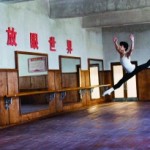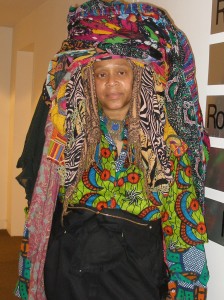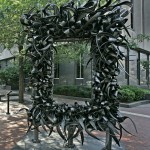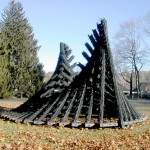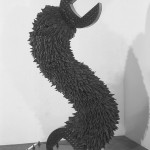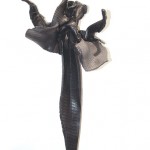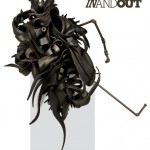Abstract Implosionism, Cerealism photos at Davis Orton Gallery, in Hudson, NY
Enjoyed last night’s opening at the Davis-Orton Gallery 114 Warren St. in Hudson, NY (legit for this blog: Karen Davis and Mark Orton recently moved from Cambridge, MA and Karen is still teaching a photography workshop at Lesley College). The show features the work of John Chervinsky of Somerville, MA and Ernie Button, of Phoenix, AZ.

Chervinsky uses a complex process to come up with photos combining still life, landscape, abstraction, hyperrealism, outer space and laboratory chalkboard diagrams –showing objects in spatial perspectives that simultaneously intrigue and perplex the viewer, as in “Abstract Implosionism, ” above, left).
“I see these photographs as posing questions without easy answers. My intent is not to express a single, narrow perspective, but to, among other things, expose the fallacy of doing so,” Chervinsky writes.
While looking at one photograph, curator Karen Davis remarked, “I really like this pitcher.” It was a picture of a pitcher…somehow suspended in space with string that appeared to come from nowhere.
Ernie Button’s “Cerealism” is a set of landscapes composed of breakfast cereal arrangements (tho there is one of French toast). On first (and second) viewing, they appear to be abstracts of fields, deserts, the pyramids…but on closer look (at the titles, especially) you see that they are bits of Cap’n Crunch, Cheerios, and other breakfast edibles, sometimes color treated to create what the gallery writeup calls ” a magical quality and an odd sense of ‘reality’”.
Much of Ernie Button’s imagery focus on the individual nature of objects and the unique qualities that each possesses. “My images often provide a voice to objects that are ignored and are frequently overlooked or taken for granted,” Button writes.
It’s an unusual and fun show, great in combination, not to be missed if you’re in the area.
Through September 19, 2010,
–Anita M. Harris
New Cambridge Observer is a publication of the Harris Communications Group of Cambridge, MA.
